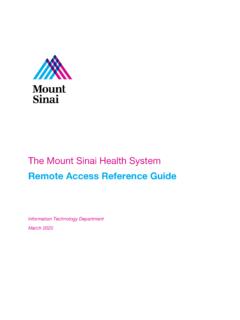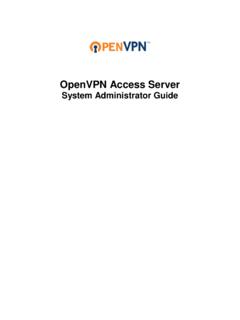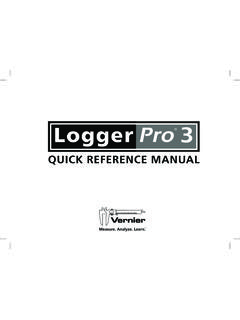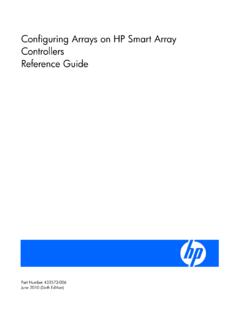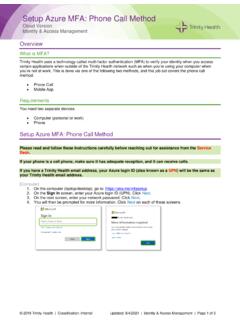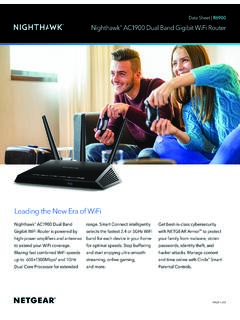Transcription of MiCollab Client Quick Reference Guide Q
1 MiCollab Q Client Quick Reference Guide About MiCollab Client Requirements MiCollab Client is a software communications product integrated with To install and use the MiCollab Desktop Client , your computer must the advanced call management features of MiVoice Business, meet the requirements listed in the following table. MiVoice MX-One, MiVoice 5000, and MiVoice Office. MiCollab Client converges the call control capabilities of Mitel Component Requirement communications platforms with contact management, Dynamic CPU Dual Core, GHz Status, and collaboration to simplify and enhance real-time communications. Disk Space 100 MB free hard disk space You can access features from the following interfaces: RAM 2 GB Minimum (4 GB or more recommended).
2 MiCollab Desktop Client NIC Full duplex, 10/100/1000 Mbps, (100 Mbps full duplex recommended). MiCollab MAC Desktop Client MiCollab Web Client Sound Card Full duplex MiCollab WebRTC Client Operating windows Vista Business/Enterprise/Ultimate MiCollab for Mobile for BlackBerry , Android , iPhone , and System SP2, 32-or 64-bit windows Client windows 7 Business/Enterprise/Ultimate MiVoice for Skype for Business 32- or 64-bit windows 8 Desktop mode only Integrated applications 32 or 64-bit The following Mitel applications interoperate with MiCollab Client : windows 10. MiCollab Audio, Web and Video Conferencing: Provides ac- Digital Media windows Media Player 6 or later cess to collaboration features such as real-time audio, video, and Player Web conferencing, annotation, desktop and application sharing, and file transfer from the MiCollab Desktop Client .
3 Microsoft .NET , Framework MiCollab Unified Messaging (UM): Provides access to voice mail and FAX messages from the MiCollab Client interfaces. MiVoice Border Gateway* and Remote Proxy*: Provides a se- MiCollab Client runs on the following thin clients : cure communications path for remote MiCollab Client users to the MiCollab Client Service. Citrix XenApp Client , , , or * Supported for MiVoice Business systems only. Remote Desktop Service *. VMware View , **, or Welcome e-mail message * Softphone calls are not supported. ** Video calls are not supported. After your MiCollab Client account has been created, you may receive a welcome e-mail message that provides your MiCollab Software installation Client login credentials, the URL to the Web Client , and other important MiCollab Client information.
4 Retain this e-mail message in If you do not have permission to install software on your computer, a secure location for future Reference . your system administrator will install the MiCollab Desktop Client for you. If you are using the MiCollab for Mobile application or MiCollab MAC. Desktop Client , you will receive a separate deployment e-mail which To install the Desktop Client : contains a link and the option to scan a QR code to deploy MiCollab for Mobile to your mobile device. 1. Install the framework Note: Your system administrator may have configured the 2. Browse to the Desktop Client software location, as specified in requirement for a PIN to be entered to download the MiCollab for the welcome e-mail message. Mobile Client .
5 Your system administrator will communicate this PIN 3. Download the software to your computer. separately from the deployment e-mail. Consult your system 4. To start the installation, launch the administrator if you did not receive this communication. file. 5. Follow the instructions in the installation wizard to install the Mi- MiCollab Desktop Client Collab Desktop Client . The MiCollab Desktop Client is installed on your computer and Note: To enable MiCollab Desktop Client integration with Ignite, provides full access to the MiCollab Client features that you are choose Custom Install and then select MiCollab Client SDK in the licensed to use. Custom setup window. Quick Reference Guide . 6. Click Finish to complete the installation.
6 Manage Account: Provides a way to add contact information, change password. upload a photo, and configure additional as- Note: Refer to the welcome e-mail message when the Installation pects of your MiCollab Client account. wizard prompts you to provide the MiCollab Client Service FQDN. Manage Statuses: Allows you to create and delete Dynamic Statuses and edit Dynamic Status elements such as call routing Log In/Out and presence information. Modify how Video calls and Instant Messages are handled. Use the MiCollab Client credentials provided in the welcome e-mail message to log in to the Desktop Client . Console*: Provides access to attendant functions such as an- swer, transfer, hold, and the ability to view and change another 1.
7 Launch the MiCollab Desktop Client application. The Login dia- user's Dynamic Status. log box appears. Collaboration*: Provides access to audio, video, and Web con- 2. Type your Login ID and Password in the Login dialog box. ferencing, and related collaboration features. 3. Click Log in. Import Contacts: Imports contacts to MiCollab Client from Goo- gle Contacts, Microsoft Outlook , IBM Lotus Notes , or Sage . 4. Select Exit from the main menu to log out of the MiCollab Desktop Software ACT! Personal Information Manager (PIM). Client . Re-sync Corporate Directory: Re-synchronize your MiCollab Desktop Client directory with your corporate directory. If "Connection Lost - Limited Functionality" is Displayed *Licensed features If you are logged into your MiCollab Client Desktop MiNET Softphone and the Client window displays "Connection Lost - Limited Dynamic Status Functionality", your connection with the MiCollab server is temporarily down and you are limited to the following features: The Dynamic Status view indicates your current Dynamic Status and presence settings.
8 From the Dynamic Status view you can change Make, receive, and end calls with some feature limitations your status, and configure Dynamic Status elements. Place calls on hold and retrieve them Mute and un-mute calls Views While your connection to the server is down, the Presence The views in the MiCollab Desktop Client 's main window provide information is out-of-date and you should ignore it. If you are a access to MiCollab Client features. Contact Center agent, the agent ID, path, call status, and ACD status are disabled (grayed out). You should disregard this information while Icon View and Features connection to the MiCollab server is down because it is not being updated. After the MiCollab server returns to service, the message Contacts: Provides your list of corporate contacts, "Connection Lost - Limited Functionality" is removed from your Client favorites and other contacts.
9 Right-click a contact to window and full functionality is restored. access additional options. Call History: Provides call histories for your dialed, Operating modes received, and missed calls. Right-click a number to access additional options. You can run the MiCollab Desktop Client in the following modes: Normal: Provides an expanded interface with full access to all Active Calls: Provides the current status (idle, ringing, views and interface elements. busy) for your phone lines. Compact: Provides a compact interface with access to search and frequently-used features. Messages: Allows you to play, forward, and delete voice mail messages and view fax messages. Tray: Provides a status icon and condensed menu in the Win- dows system tray.
10 ACD: Provides an interface for handling Automatic Call For MAC desktop clients , you can set the Default Calling Mode: Distribution (ACD) calls. Audio: Outgoing calls are audio only with no video. Launch Pad: Provides Quick access to telephone Video: Outgoing calls are audio and video. numbers, URLs, applications, and files on your It is recommended that you set the default to Audio and then switch computer. to Video when required. The Audio/Video call mode only applies to your Client and not the called party. For example, in an AWV. conference, you will not see the other party unless they have video RSS window enabled as well. Provides access to scrolling Rich site Summary (RSS) content such as news headlines, excerpts from discussion forums, or corporate Main menu information.











